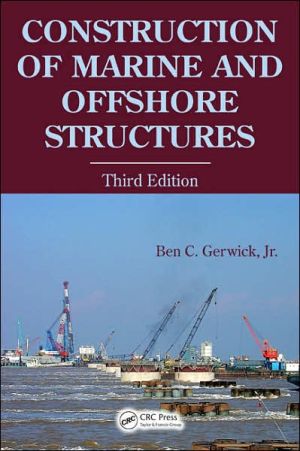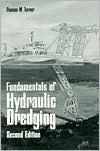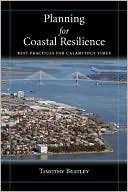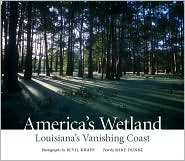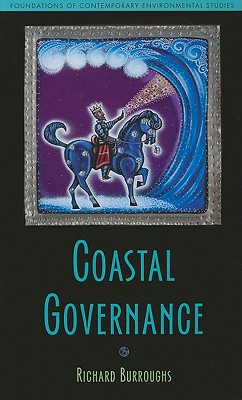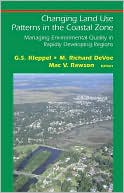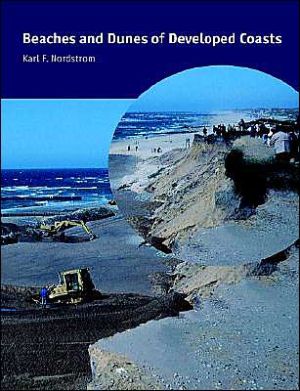Construction of Marine and Offshore Structures, Third Edition
For two decades, Ben Gerwick's ability to capture the current state of practice and present it in a straightforward, easily digestible manner has made Construction of Marine and Offshore Structures the reference of choice for modern civil and maritime construction engineers. The third edition of this perennial bestseller continues to be the most modern and authoritative guide in the field. Based on the author's lifetime of experience, the book also incorporates relevant published information...
Search in google:
For two decades, Ben Gerwick's ability to capture the current state of practice and present it in a straightforward, easily digestible manner has made Construction of Marine and Offshore Structures the reference of choice for modern civil and maritime construction engineers. The third edition of this perennial bestseller continues to be the most modern and authoritative guide in the field. Based on the author's lifetime of experience, the book also incorporates relevant published information from many sources.Updated and expanded to reflect new technologies, methods, and materials, the book includes new information on topics such as liquefaction of loose sediments, scour and erosion, archaeological concerns, high-performance steel, ultra-high-performance concrete, steel H piles, and damage from sabotage and terrorism. It features coverage of LNG terminals and offshore wind and wave energy structures. Clearly, concisely, and accessibly, this book steers you away from the pitfalls and toward the successful implementation of principles that can bring your marine and offshore projects to life.
IntroductionGeneral 1Geography 3Ecological Environment 4Legal Jurisdiction 4Offshore Construction Relationships and Sequences 5Typical Marine Structures and Contracts 8Interaction of Design and Construction 9Physical Environmental Aspects of Marine and Offshore ConstructionGeneral 15Distances and Depths 15Hydrostatic Pressure and Buoyancy 16Temperature 17Seawater and Sea-Air Interface Chemistry 18Marine Organisms 18Currents 20Waves and Swells 25Winds and Storms 31Tides and Storm Surges 34Rain, Snow, Fog, Spray, Atmospheric Icing, and Lightning 36Sea Ice and Icebergs 37Seismicity, Seaquakes, and Tsunamis 42Floods 43Scour 44Siltation and Bed Loads 44Sabotage and Terrorism 45Ship Traffic 45Fire and Smoke 46Accidental Events 46Global Warming 47Geotechnical Aspects: Seafloor andMarine SoilsGeneral 49Dense Sands 52Liquefaction of Soils 52Calcareous Sands 53Glacial Till and Boulders on Seafloor 53Overconsolidated Silts 54Subsea Permafrost and Clathrates 55Weak Arctic Silts and Clays 56Ice Scour and Pingos 56Methane Gas 56Muds and Clays 56Underwater Slopes in Clays 57Pile Driving "Set-Up" 58Short-Term Bearing Strength 58Dredging 58Sampling 58Penetration 59Consolidation of Clays; Improvement in Strength 59Coral and Similar Biogenic Soils; Cemented Soils, Cap Rock 59Unconsolidated Sands 60Underwater Sand Dunes ("Megadunes") 62Bedrock Outcrops 62Cobbles 63Deep Gravel Deposits 64Seafloor Oozes 64Seafloor Instability and Slumping; Turbidity Currents 64Scour and Erosion 65Concluding Remarks 66Ecological and Societal Impacts of Marine ConstructionGeneral 69Oil and Petroleum Products 69Toxic Chemicals 70Contaminated Soils 71Construction Wastes 71Turbidity 71Sediment Transport, Scour, and Erosion 72Air Pollution 72Marine Life: Mammals and Birds, Fish, and Other Biota 73Aquifers 74Noise 74Highway, Rail, Barge, and Air Traffic 75Protection of Existing Structures 75Liquefaction 77Safety of the Public and Third-Party Vessels 77Archaeological Concerns 78Materials and Fabrication for Marine StructuresGeneral 79Steel Structures for the Marine Environment 79Steel Materials 80Fabrication and Welding 80Erection of Structural Steel 85Coatings and Corrosion Protection of Steel Structures 88High Performance Steels 91Structural Concrete 91General 91Concrete Mixes and Properties 91High Performance Concrete- "Flowing Concrete" 95Structural Low-Density Concrete 96Ultra-High Performance Concrete (UHPC) 97Conveyance and Placement of Concrete 97Curing 98Steel Reinforcement 98Prestressing Tendons and Accessories 102Embedments 105Coatings for Marine Concrete 106Construction Joints 106Forming and Support 107Tolerances 108Hybrid Steel-Concrete Structures 108Hybrid Structures 109Composite Construction 109Plastics and Synthetic Materials, Composites 111Titanium 113Rock, Sand, and Asphaltic-Bituminous Materials 114Marine and Offshore Construction EquipmentGeneral 117Basic Motions in a Seaway 118Buoyancy, Draft, and Freeboard 120Stability 121Damage Control 124Barges 126Crane Barges 130Offshore Derrick Barges (Fully Revolving) 134Semisubmersible Barges 137Jack-Up Construction Barges 140Launch Barges 144Catamaran Barges 146Dredges 147Pipe-Laying Barges 152Supply Boats 155Anchor-Handling Boats 156Towboats 156Drilling Vessels 157Crew Boats 158Floating Concrete Plant 158Tower Cranes 159Specialized Equipment 160Marine OperationsTowing 161Moorings and Anchors 169Mooring Lines 169Anchors 170Drag Anchors 170Pile Anchors 174Propellant Anchors 174Suction Anchors 175Driven-Plate Anchors 175Mooring Systems 175Handling Heavy Loads at Sea 183General 183Personnel Transfer at Sea 190Underwater Intervention, Diving, Underwater Work Systems, Remote-Operated Vehicles (ROVs), and Manipulators 194Diving 194Remote-Operated Vehicles (ROVs) 201Manipulators 203Underwater Concreting and Grouting 203General 203Underwater Concrete Mixes 204Placement of Tremie Concrete 205Special Admixtures for Concreting Underwater 209Grout-Intruded Aggregate 212Pumped Concrete and Mortar 213Underbase Grout 213Grout for Transfer of Forces from Piles to Sleeves and Jacket Legs 215Low-Strength Underwater Concrete 215Summary 215Offshore Surveying, Navigation, and Seafloor Surveys 216Temporary Buoyancy Augmentation 223Seafloor Modifications and ImprovementsGeneral 225Controls for Grade and Position 226Determination of Existing Conditions 226Seafloor Dredging, Obstruction Removal, and Leveling 227Dredging and Removal of Hard Material and Rock 235Placement of Underwater Fills 240Consolidation and Strengthening of Weak Soils 245Prevention of Liquefaction 248Scour Protection 248Concluding Remarks 252Installation of Piles in Marine and Offshore StructureGeneral 255Fabrication of Tubular Steel Piles 259Transportation of Piling 260Installing Piles 262Methods of Increasing Penetration 285Insert Piles 290Anchoring into Rock or Hardpan 291Testing High Capacity Piles 292Steel H Piles 293Enhancing Stiffness and Capacity of Piles 293Prestressed Concrete Cylinder Piles 294Handling and Positioning of Piles for Offshore Terminals 296Drilled and Grouted Piles 297Cast-in-Drilled-Hole Piles, Drilled Shafts 302Other Installation Experience 312Installation in Difficult Soils 312Other Methods of Improving the Capacity of Driven Piles 313Slurry Walls, Secant Walls, and Tangent Walls 315Steel Sheet Piles 316Vibratory Pile Hammers 317Micropiles 317Harbor, River, and Estuary StructuresGeneral 319Harbor Structures 319Types 319Pile-Supported Structures 319Steel Piles 319Concrete Piles 320Installation 320Batter (Raker) Piles 322Pile Location 323Jetting 323Driving Through Obstructions or Very Hard Material 323Staying of Piles 324Head Connections 325Concrete Deck 326Fender System 327Bulkheads, Quay Walls 327Description 327Sheet Pile Bulkheads 327Caisson Quay Walls 330River Structures 331Description 331Sheet Pile Cellular Structures 331"Lift-In" Precast Concrete Shells-"In-the-Wet" Construction 335Float-In Concrete Structures 336General 336Prefabrication 337Launching 338Installation 339Leveling Pads 339Underfill 340Foundations for Overwater Bridge Piers 343General 343Open Caissons 344Pneumatic Caissons 345Gravity-Base Caissons (Box Caissons) 346Pile-Supported Box Caissons 357Large-Diameter Tubular Piles 360Steel Tubular Piles 360Prestressed Concrete Tubular Piles 367Connection of Piles to Footing Block (Pile Cap) 370CIDH Drilled Shafts (Piles) 371Cofferdams 371Steel Sheet Pile Cofferdams 372Liquefaction During Cofferdam Construction 375Cofferdams on Slope 376Deep Cofferdams 376Portable Cofferdams 378Protective Structures for Bridge Piers 378Belled Piers 379Submerged Prefabricated Tunnels (Tubes) 381Description 381Prefabrication of Steel-Concrete Composite Tunnel Segments 382Prefabrication of All-Concrete Tube Segments 383Preparation of Trench 384Installing the Segments 385Underfill and Backfill 386Portal Connections 386Pile-Supported Tunnels 386Submerged Floating Tunnels 387Storm Surge Barriers 387Description 387Venice Storm Surge Barrier 388Oosterschelde Storm Surge Barrier 389Flow-Control Structures 397Description 397Temperature Control Devices 397Coastal StructuresGeneral 399Ocean Outfalls and Intakes 399Breakwaters 408General 408Rubble-Mound Breakwaters 408Caisson-Type Breakwaters and Caisson-Retained Islands 414Sheet Pile Cellular Breakwaters 415Offshore Terminals 416Offshore Platforms: Steel Jackets and Pin PilesGeneral 433Fabrication of Steel Jackets 434Load-Out, Tie-Down, and Transport 435Removal of Jacket from Transport Barge; Lifting; Launching 444Upending of Jacket 452Installation on the Seafloor 455Pile and Conductor Installation 458Deck Installation 461Examples 464Example 1-Hondo 464Example 2-Cognac 472Example 3-Cerveza 476Concrete Offshore Platforms: Gravity-Base StructuresGeneral 479Stages of Construction 483Stage 1-Construction Basin 483Stage 2-Construction of Base Raft 487Stage 3-Float-Out 490Stage 4-Mooring at Deep-Water Construction Site 491Stage 5-Construction at Deep-Water Site 492Stage 6-Shaft Construction 501Stage 7-Towing to Deep-Water Mating Site 505Stage 8-Construction of Deck Structure 505Stage 9-Deck Transport 507Stage 10-Submergence of Substructure for Deck Mating 509Stage 11-Deck Mating 510Stage 12-Hookup 513Stage 13-Towing to Installation Site 513Stage 14-Installation at Site 514Stage 15-Installation of Conductors 524Alternative Concepts for Construction 525Sub-Base Construction 529Platform Relocation 530Hybrid Concrete-Steel Platforms 530Permanently Floating StructuresGeneral 533Fabrication of Concrete Floating Structures 537Concrete Properties of Special Importance to Floating Structures 540Construction and Launching 541Floating Concrete Bridges 544Floating Tunnels 544Semi-Submersibles 545Barges 545Floating Airfields 547Structures for Permanently Floating Service 548Marinas 549Piers for Berthing Large Ships 549Floating Breakwaters 549Mating Afloat 549Other Applications of Marine and Offshore Construction TechnologyGeneral 553Single-Point Moorings 554Articulated Columns 557Seafloor Templates 566Underwater Oil Storage Vessels 572Cable Arrays, Moored Buoys, and Seafloor Deployment 573Ocean Thermal Energy Conversion 574Offshore Export and Import Terminals for Cryogenic Gas-LNG and LPG 576General 576Offshore Wind-Power Foundations 580Wave-Power Structures 580Tidal Power Stations 581Barrier Walls 581Breakwaters 582Installation of Submarine PipelinesGeneral 583Conventional S-Lay Barge 586Bottom-Pull Method 603Reel Barge 610Surface Float 612Controlled Underwater Flotation (Controlled Subsurface Float) 613Controlled Above-Bottom Pull 613J-Tube Method from Platform 615J-Lay from Barge 615S-Curve with Collapsible Floats 616Bundled Pipes 616Directional Drilling (Horizontal Drilling) 616Laying Under Ice 617Protection of Pipelines: Burial and Covering with Rock 617Support of Pipelines 624Cryogenic Pipelines for LNG and LPG 625Plastic and Composite Pipelines and CablesSubmarine Pipelines of Composite Materials and Plastics 627High Density Polyethylene Pipelines 627Fiber-Reinforced Glass Pipes 629Composite Flexible Pipelines and Risers 630Cable Laying 631Topside InstallationGeneral 633Module Erection 633Hookup 636Giant Modules and Transfer of Complete Deck 637Float-Over Deck Structures 638Delivery and Installation 638Hi-Deck Method 640French "Smart" System 640The Wandoo Platform 641Other Methods 641Repairs to Marine StructuresGeneral 643Principles Governing Repairs 644Repairs to Steel Structures 645Repairs to Corroded Steel Members 648Repairs to Concrete Structures 648Repairs to Foundations 653Fire Damage 655Pipeline Repairs 655Strengthening Existing StructuresGeneral 659Strengthening of Offshore Platforms, Terminals, Members and Assemblies 659Increasing Capacity of Existing Piles for Axial Loads 660Increasing Lateral Capacity of Piles and Structures in Soil-Structure Interaction 666Penetrations Through Concrete Walls 667Seismic Retrofit 669Removal and SalvageRemoval of Offshore Platforms 671Removal of Piled Structures (Terminals, Trestles, Shallow-Water Platforms) 672Removal of Pile-Supported Steel Platforms 673Removal of Concrete Gravity: Base Offshore Platforms 676New Developments in Salvage Techniques 679Removal of Harbor Structures 679Removal of Coastal Structures 680ConstructibilityGeneral 681Construction Stages for Offshore Structures 682Principles of Constructibility 686Facilities and Methods for Fabrication 687Launching 687Launch Barges 687Lifting for Transport 688Construction in a Graving Dock or Drydock 688Construction in a Basin 688Launching from a Ways or a Launch Barge 689Sand Jacking 690Rolling-In 691Jacking Down 691Barge Launching by Ballasting 691Assembly and Jointing Afloat 692Material Selection and Procedures 693Construction Procedures 695Access 701Tolerances 702Survey Control 703Quality Control and Assurance 704Safety 705Control of Construction: Feedback and Modification 706Contingency Planning 707Manuals 708On-Site Instruction Sheets 710Risk and Reliability Evaluation 711Construction in the Deep SeaGeneral 717Considerations and Phenomena for Deep-Sea Operations 718Techniques for Deep-Sea Construction 719Properties of Materials for the Deep Sea 721Platforms in the Deep Sea: Compliant Structures 726Description 726Guyed Towers 727Compliant (Flexible) Tower 730Articulated Towers 733Tension-Leg Platforms (TLP's) 733SPARS 735Ship-Shaped FPSOs 735Deep-Water Moorings 736Construction Operations on the Deep Seafloor 740Deep-Water Pipe Laying 743Seafloor Well Completions 746Deep-Water Bridge Piers 746Arctic Marine StructuresGeneral 751Sea Ice and Icebergs 752Atmospheric Conditions 755Arctic Seafloor and Geotechnics 756Oceanographic 758Ecological Considerations 759Logistics and Operations 760Earthwork in the Arctic Offshore 762Ice Structures 766Steel and Concrete Structures for the Arctic 768Steel Tower Platforms 768Caisson-Retained Islands 768Shallow-Water Gravity-Base Caissons 769Jack-Up Structures 770Bottom-Founded Deep-Water Structures 770Floating Structures 772Well Protectors and Seafloor Templates 773Deployment of Structures in the Arctic 774Installation at Site 776Ice Condition Surveys and Ice Management 786Durability 787Constructibility 789Pipeline Installation 790Current Arctic Developments 791References 793Index 797
